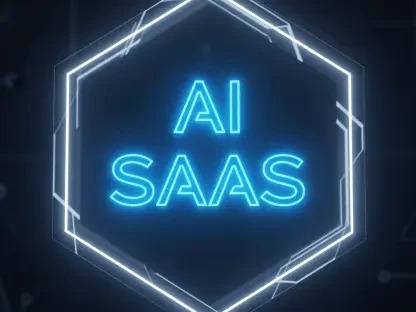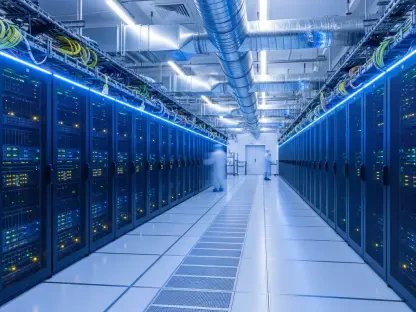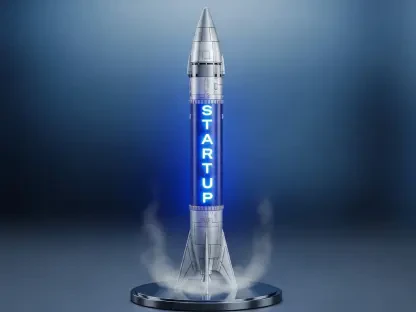The Enterprise Software Landscape: A Shifting Paradigm
In today’s fast-paced global economy, enterprise software stands as the backbone of business operations, orchestrating everything from supply chain logistics to financial reporting with unparalleled precision. The industry, valued at hundreds of billions of dollars, is undergoing a profound transformation driven by digital initiatives that demand agility and innovation. Companies across sectors rely on these systems to streamline processes, yet the market is at a crossroads, reshaped by the sweeping adoption of cloud computing and the promise of emerging technologies.
Cloud computing has redefined how businesses access and deploy software, shifting the focus from on-premises infrastructure to scalable, subscription-based models. This transition has intensified competition among key players like SAP, Oracle, and Microsoft, each vying to dominate the cloud-first landscape. While Microsoft leverages its Azure ecosystem and Oracle pushes autonomous database solutions, SAP has carved a niche with its integrated ERP offerings, positioning itself as a trusted partner for complex enterprise needs.
Amid this evolution, artificial intelligence (AI) emerges as a game-changer, challenging traditional software models by promising automation and predictive insights. However, the narrative of “software is dead” casts a shadow over established companies, suggesting that AI could render legacy systems obsolete. This perspective overlooks the critical role of reliable software in mission-critical operations, setting the stage for a deeper examination of how industry leaders like SAP navigate this disruptive era.
SAP’s Strategic Pivot: Cloud and AI at the Core
Driving Trends in SAP’s Transformation
SAP has embarked on a decisive journey toward cloud-based solutions, recognizing the need for flexibility in an increasingly digital world. The success of its Cloud ERP Suite, alongside tailored applications for specific industries, showcases a commitment to meeting modern enterprise demands. This shift is not merely technological but a response to the growing expectation for seamless integration and accessibility across business functions.
At the heart of this transformation lies the integration of AI, exemplified by SAP’s platform Joule, which enhances user productivity through intelligent automation. Joule enables real-time data analysis and personalized recommendations, addressing pain points like manual workload in operational workflows. This capability aligns with enterprise needs for scalability and instant decision-making, positioning SAP as a forward-thinking player in a competitive field.
Furthermore, growth opportunities abound in sectors such as manufacturing and finance, where system reliability is non-negotiable. SAP’s focus on delivering consistent performance and transactional accuracy caters to these industries’ stringent requirements. By balancing innovation with dependability, the company taps into markets that prioritize stability over untested technological trends, ensuring sustained relevance.
Financial Performance and Market Growth
SAP’s financial metrics reflect the strength of its strategic direction, with cloud revenue reaching €5.13 billion in the second quarter of this year, marking a significant year-over-year increase. The Cloud ERP Suite alone reported a remarkable 30% revenue growth, underscoring robust demand for its cloud-native offerings. These figures highlight the effectiveness of SAP’s transition to subscription-based models in capturing market share.
Customer loyalty further bolsters this performance, as evidenced by a 98% retention rate in the cloud business segment. This high level of trust signals confidence in SAP’s ability to deliver consistent value, even as enterprises navigate complex digital shifts. Such metrics serve as a testament to the enduring appeal of proven solutions amid the hype surrounding newer technologies.
Looking ahead, projections indicate that SAP’s cloud revenue could surpass €20 billion by 2026, fueled by AI expansion and strategic alliances. Despite this growth trajectory, the company’s valuation remains at a 25% discount to its five-year average price-to-earnings ratio, suggesting a potential misjudgment by the market. This discrepancy presents a unique opportunity for investors to reassess SAP’s position in the enterprise tech space.
Challenges in the AI and Software Convergence
The intersection of AI and traditional software sparks skepticism about the latter’s relevance, particularly with the rise of generative AI technologies. Critics argue that such advancements could overshadow established systems, pushing companies like SAP to prove their adaptability. This narrative challenges the industry to redefine value in an era captivated by cutting-edge innovation.
Technological hurdles also loom large, as integrating AI into mission-critical ERP systems without disruption remains a complex task. Ensuring that AI enhancements complement rather than destabilize core functionalities requires meticulous engineering and testing. SAP must navigate these intricacies to maintain the trust of enterprises that depend on uninterrupted operations for their success.
Market dynamics add another layer of difficulty, with AI-native startups intensifying competition and shifting customer expectations toward rapid, flexible solutions. To counter this, SAP adopts a hybrid approach, blending AI augmentation with the reliability of its software foundation. This strategy aims to address modern demands while preserving the stability that has long defined its offerings, creating a balanced path forward.
Navigating the Regulatory and Compliance Terrain
The enterprise software sector operates within a stringent regulatory framework, shaped by data privacy laws and industry-specific compliance mandates. These rules, varying across regions, impose significant obligations on companies to safeguard sensitive information and ensure ethical practices. For SAP, adhering to such standards is paramount to maintaining credibility in a highly scrutinized environment.
Security and transactional precision form the cornerstone of SAP’s approach, especially in regulated sectors like finance and supply chain management. By prioritizing robust safeguards and accurate processing, the company addresses the critical needs of clients who cannot afford lapses in compliance. This focus reinforces SAP’s reputation as a dependable partner amid growing concerns over data breaches and regulatory penalties.
Global regulations also influence cloud adoption and AI deployment, necessitating adaptive strategies to meet diverse legal requirements. SAP tackles these challenges through partnerships, such as its collaboration with Microsoft, which facilitates interoperable ecosystems compliant with international standards. Such alliances enable the company to navigate the complex compliance landscape while expanding its technological reach.
The Future of Enterprise Software: SAP’s AI-Driven Vision
The trajectory of enterprise software points toward hybrid models that merge traditional systems with AI capabilities, balancing innovation with reliability. This approach acknowledges that while AI offers transformative potential, it currently falls short in managing intricate business processes. SAP’s strategy exemplifies this trend, leveraging AI to enhance efficiency without compromising the integrity of core operations.
Emerging concepts like agentic AI, though promising for automating simpler tasks, reveal limitations in addressing deterministic workflows essential to enterprises. SAP counters this by expanding Joule, with plans for deeper integration across its Business Suite and third-party tools by the third quarter of next year. This forward-looking vision ensures that AI serves as a tool for empowerment rather than a standalone solution.
External factors, including global economic conditions and evolving enterprise preferences, will shape the industry’s future, alongside potential disruptors that could alter competitive dynamics. SAP’s role as a bridge between legacy infrastructure and cutting-edge advancements positions it to weather these uncertainties. By maintaining a dual focus on stability and progress, the company secures its place as a pivotal force in enterprise technology.
Conclusion: SAP as a Contrarian Powerhouse
Reflecting on SAP’s journey, the company’s resilience shone through as it countered the narrative that traditional software had lost its relevance. Strong financial growth, evidenced by substantial cloud revenue gains, paired with a near-perfect customer retention rate, underscored the trust placed in its solutions. The innovative integration of AI through platforms like Joule further highlighted how SAP adapted to modern demands without sacrificing its foundational strengths.
For stakeholders, the path forward involves prioritizing sustainable innovation by investing in hybrid solutions that combine the best of legacy systems and emerging technologies. Exploring deeper partnerships, similar to those with Microsoft, offers a way to enhance compliance and interoperability on a global scale. Additionally, recognizing SAP’s undervaluation in the market presents a strategic moment to capitalize on its long-term potential.
Looking beyond immediate challenges, the focus shifts to fostering adaptability in an ever-changing tech landscape. Enterprises and investors alike stand to benefit from supporting initiatives that bridge current needs with future possibilities. SAP’s story serves as a reminder that thoughtful evolution, rather than radical disruption, often paves the way for enduring success in the enterprise software domain.









